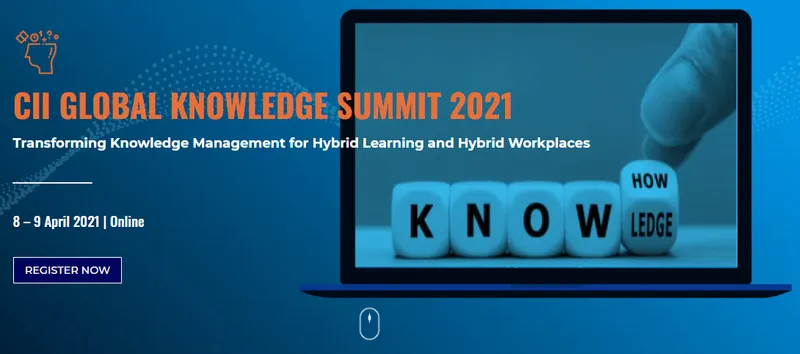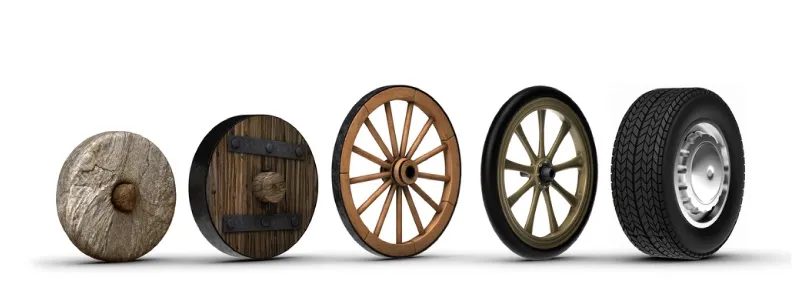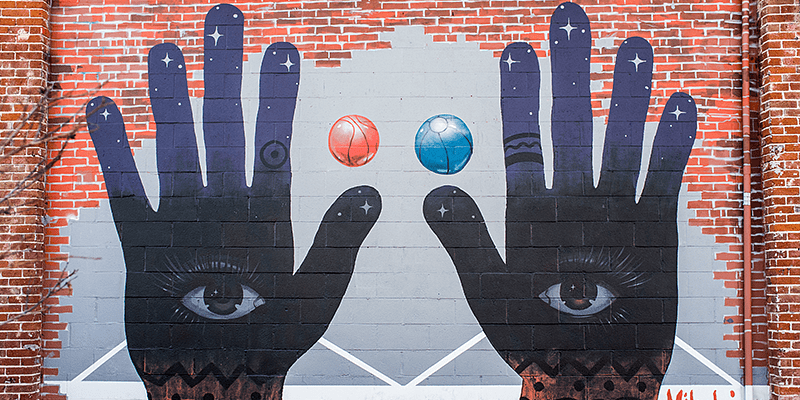CII’s annual Global Knowledge Summit is being held entirely online on April 8-9 this week. The theme of the 16th summit is Transforming Knowledge Management for Hybrid Learning and Hybrid Workplaces.
As media partner for the Knowledge Summits, see YourStory’s coverage of the editions from 2021, 2020 and 2019, and sessions takeaways from the Bangalore K-Community meetups. See also our d.Zen (‘Design Zen’) section with more resources on design thinking.
Manish Vashist is Design Director, IBM. He has over 20 years of experience across sectors like banking, finance, education, travel and IT. He is a skilled trainer and facilitator as well, in enterprise design thinking and UX strategy.
He is speaking on a panel at the CII Global Knowledge Summit this week and joins us in this interview on design thinking in the pandemic era, leadership mandates for creating the right culture, and tips for business leaders.
Edited excerpts below:
YourStory [YS]: What are some examples you have come across of design thinking in action during the pandemic?
Manish Vashist [MV]: Design thinking is not just one activity or a single workshop. It is a methodology, a mindset and a tangible, thought-through set of actions that help solve problems more efficiently and in a human-centric way.
These activities are placed at all levels of what I call a skydive model. From a 35,000-feet view, you can only see clouds and possibly the earth’s curvature. At 15,000 feet, you may not have to carry oxygen. At 4,000 feet, you open your chute and slow down. At 1,000 feet, you are looking for a landing zone, and at Ground Zero you actually land on the ground.
This pandemic highlighted the importance of the design community. Suddenly, no one can travel as much, and the entire design process becomes virtual. In earlier days, we use to mention remote design facilitation, but this pandemic actually made it a standard operating procedure.
My team conceptualised, designed, and delivered an app for one of the major automotive manufacturers during this period. It was a multi-month and continuous design thinking workshop. Ideation, prototyping, validation, and design were all done remotely.
The other example is where the team overhauled an app for a major FMCG client where the challenge was adaptation. We conducted multiple stakeholder and user interviews and converted the insights into concepts. Again, everything was planned and managed remotely.
During this pandemic, we also ran a major design thinking training at scale for the entire organisation. There were over 300 participants across the globe, and over 20 coaches were involved. The entire programme took seven weeks to complete.
All of these and many others could be possible because of the openness to remote design and availability of video and co-creation tools. I think this model is here to stay.

YS: What are some ways in which companies can create a design thinking culture that benefits organisational learning and knowledge sharing?
MV: Culture eats strategy (and process) for breakfast! Changing a team or an organisational culture is never easy. This requires a pragmatic approach.
The key is to have an executive sponsor! Design thinking culture can only flow from top to down. There must be a champion and representation on the board for this change.
Once the purpose and intention are set, the team can be augmented with the experts who already inherit design thinking skills, award them a task or a small project, and set them up for success. In parallel, a drive to educate design thinking skills must start at the leadership and management level.
The team must understand the benefits of this shift. Typically, agile and DevOps go hand in hand with design thinking. The organisation must think about an end-to-end strategy for delivering the output and not just initiating ideas.
This includes how to uncover the challenges, go deeper into the specific journeys, churn out ideas, convert ideas into tangible epics and stories, and eventually, place the stories in a plan and oversee the delivery.
The entire process must be thought through. This may also involve assessing the existing tools to capture the output, evaluating if they are fit for the change.

YS: As we slowly move out of the pandemic, how do you see the importance of design thinking being accelerated, and in what domains, functions, and tasks?
MV: These changes are definitely here to stay and the pandemic certainly acted as a catalyst. Teams and organisations very well understand that experience is the key to the success of any programme.
We could clearly see how operations, production, development and so on were industrialised and standardised. The same transformation is happening to design and strategy.
There are some domains – such as BFSI, ecommerce, medical, transport – that are way ahead of the curve. At the same time, mining, education, and the like are catching up very fast.
Design and strategy use to be black boxes in the past but are opening up. Design thinking is helping in rationalising and speeding up these functions.
Idea jams and MVPs are executed now, and what used to take years now takes a few months or in some cases even just weeks. This method has provided clarity in terms of the vision and status to everyone.
Now teams can easily link long-term objectives to the near-term strategy and how these are being executed in the field. The feedback loop is much faster, and therefore identification of what is not working and course alignment is also much faster.
I personally observed some fundamental behavioural changes in organisations. People now expect to work remotely while work timings have become flexible. Organisations that never promoted work-from-home culture are surviving because of it.
I know organisations that have shipped tens of thousands of desktops to their employees’ homes. Companies are considering this as the way of working even after the pandemic is over.

YS: Looking ahead, what are some key emerging trends you see in the field of design thinking?
MV: In my opinion, the following trends may be very visible during the post-lockdown phase.
Maturity: The industry is growing every day. More and more practitioners and organisations will realise that design thinking is much more than a workshop. It is the mindset and a method to solve the real problems in a human-centric way.
Persuasion: Element of persuasion that is linked with innate human desires were missing from the entire process. I think the activities would be augmented, and persuasion hooks would become part of design thinking – thus making it even more effective.
Facilitators: This is already happening, but I think will accelerate further. Designers will play the role of design facilitation. They will nudge the teams to come up with solutions and provide platforms and environments where design can lead the conversation.
AI Inclusion: This is definitely going to be one of the major addition to the classical model. Designing for artificial intelligence (AI) would be a big-ticket item in the coming years. The play and activities have to be augmented to include AI-first solutions. On the other hand, the way AI and data can help in research, ideation, and crafting a solution would be a big game-changer.
Toolsets: New tools are emerging and will keep accelerating in the coming years as well. Today, we have Mural, XD, Miro and so on to run remote sessions with separate video communications via Webex and Teams along with PowerPoint, Slack, and Trellis of the world. I think the features would merge and we can see a new toolset for remote activities.

YS: What are your parting words of advice on how business leaders in our audience should harness design thinking?
MV: The biggest advantage of design thinking is co-creation, and therefore the sense of ownership. Now it is not just a designer’s job to create solutions anymore, it is the stakeholder’s job to create.
Designers are becoming design facilitators and the business and technical stakeholders are co-creating solutions. Therefore, it is easier and faster to own the final idea as it is done in a collaborative fashion.
There has been a cultural shift and now organisations are focusing on end-user experiences as they utilise their product and services. They are empathetic towards the needs and ask of their customer, and also how flawlessly it should be delivered.
Hence, it is important that the project team understands the end consumer and co-creates the solution while designing. The organisation culture can become more empathetic towards the end customer or the user of their application.
Therefore, everyone can share and contribute ideas. The team feels valued when contributing towards strategy and long term goals.
The sense of progress can be easily communicated. The team can co-create hills and carve out a path towards approaching that hill. Everyone in the team can be easily made aware of where they are and what they are trying to achieve.
This brings a sense of togetherness and justification. Everyone can see the bigger picture at hand, and therefore have a greater sense of clarity and agility.










